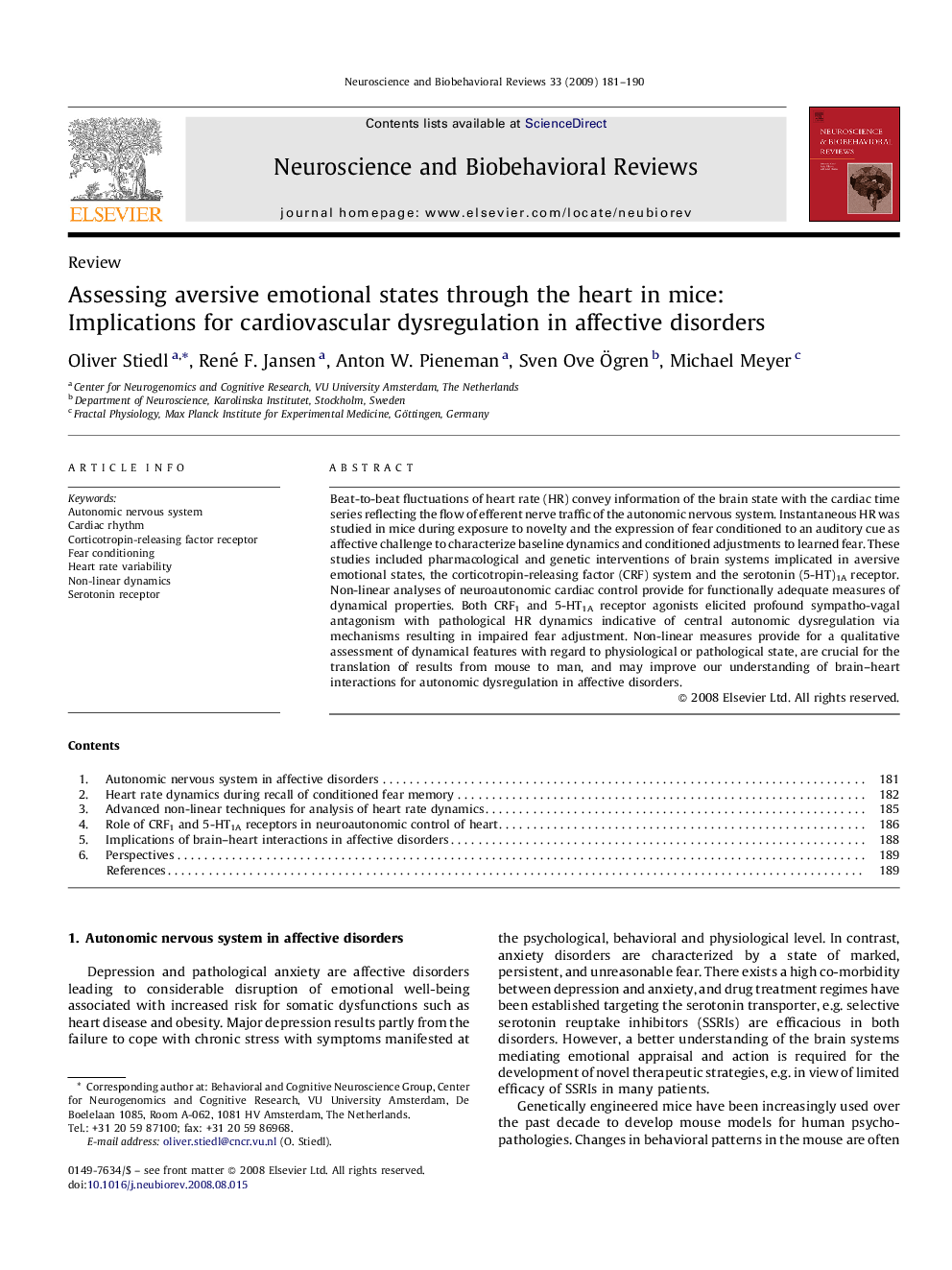| Article ID | Journal | Published Year | Pages | File Type |
|---|---|---|---|---|
| 938216 | Neuroscience & Biobehavioral Reviews | 2009 | 10 Pages |
Beat-to-beat fluctuations of heart rate (HR) convey information of the brain state with the cardiac time series reflecting the flow of efferent nerve traffic of the autonomic nervous system. Instantaneous HR was studied in mice during exposure to novelty and the expression of fear conditioned to an auditory cue as affective challenge to characterize baseline dynamics and conditioned adjustments to learned fear. These studies included pharmacological and genetic interventions of brain systems implicated in aversive emotional states, the corticotropin-releasing factor (CRF) system and the serotonin (5-HT)1A receptor. Non-linear analyses of neuroautonomic cardiac control provide for functionally adequate measures of dynamical properties. Both CRF1 and 5-HT1A receptor agonists elicited profound sympatho-vagal antagonism with pathological HR dynamics indicative of central autonomic dysregulation via mechanisms resulting in impaired fear adjustment. Non-linear measures provide for a qualitative assessment of dynamical features with regard to physiological or pathological state, are crucial for the translation of results from mouse to man, and may improve our understanding of brain–heart interactions for autonomic dysregulation in affective disorders.
